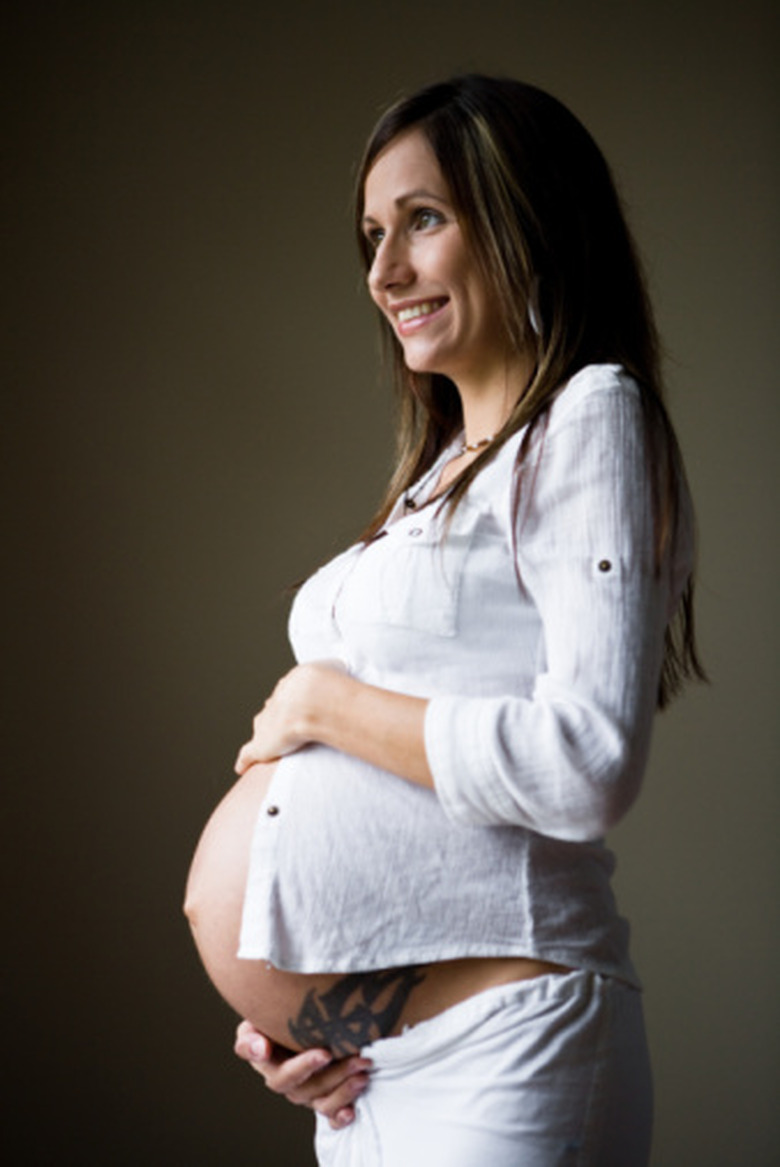Stages Of Human Reproduction
Human reproduction can be divided into different stages, the best known being the trimester system. This divides the roughly nine months of pregnancy into three equal sections lasting three months each. From a microscopic single-celled organism, a baby uses time and maternal resources to grow into a healthy baby weighing about six to eight pounds when it is born.
First Trimester
First Trimester
The first trimester lasts three months. It begins with fertilization of the egg by a sperm in the fallopian tube that connects the uterus to the ovaries. The fertilized egg turns into a zygote, which is a single cell with a full set of chromosomes (an egg and a sperm both have half a set of chromosomes). The original zygote cell multiplies as it moves down the fallopian tube. The zygote turns into a morula when it contains 16 cells and a blastocyst when it is made of about 100 cells. The cells get to the uterine lining and implant there on about day six. There the blastocyst continues to grow as an embryo.
The organs start to differentiate in the third week, limbs become apparent in the second month and at the end of the second month, sexual characteristics appear. The embryo turns into a fetus in the third month.
Second Trimester
Second Trimester
After the first trimester, the fetus has almost all of its organs ready apart from the brain, nervous system and lungs. It spends the next three months developing bone structure, growing larger and maturing its brain and lungs. The baby starts to kick and move around during the second trimester.
Third Trimester
Third Trimester
The fetus perfects its brain structure during the last trimester. Its circulatory system and its lung system develop more during this time so the baby is ready to breathe air. The last trimester is also when the baby grows even larger and uses a lot of the mother's protein and calcium reserves to fuel this process. The mother's natural antibodies also pass to the fetus during the last month of pregnancy.
Stages of Birth
Stages of Birth
Birth also has three stages. The first stage is when the mother goes into labor and the labor progresses until her cervix is fully dilated (10 cm in diameter). The amniotic sac also bursts (her water breaks) during the first stage. The second stage involves moving the baby down the birth canal and out of the body using very strong contractions of the uterus every two to three minutes. The third stage of birth is expelling the placenta after the baby is born.
Cite This Article
MLA
O'Keeffe, Jillian. "Stages Of Human Reproduction" sciencing.com, https://www.sciencing.com/stages-human-reproduction-8261768/. 24 April 2017.
APA
O'Keeffe, Jillian. (2017, April 24). Stages Of Human Reproduction. sciencing.com. Retrieved from https://www.sciencing.com/stages-human-reproduction-8261768/
Chicago
O'Keeffe, Jillian. Stages Of Human Reproduction last modified March 24, 2022. https://www.sciencing.com/stages-human-reproduction-8261768/
